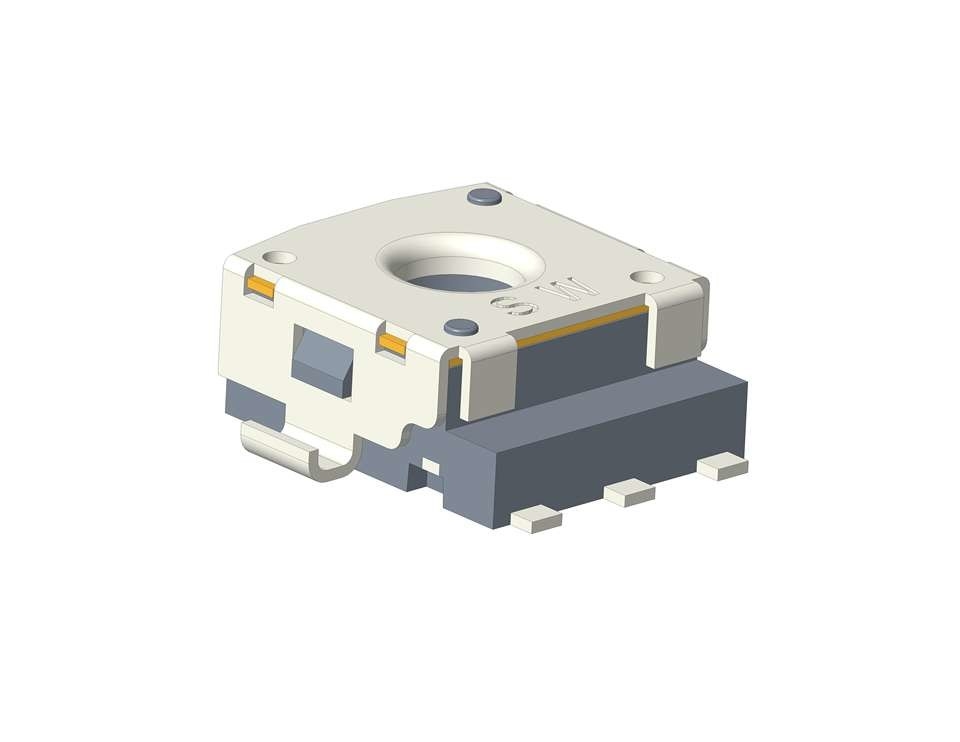With the continuous improvement of industrial automation, precision sensing technology has been widely used in various fields. As an important sensing device, Shaft Encoders play a key role in many modern production lines and mechanical equipment with their precise performance, compact design and efficient installation methods. This article will explore the working principle, application field, performance characteristics and practical cases of shaft encoders to demonstrate its important value in industrial automation.

Working principle: Accurate conversion of motion signals
The working principle of shaft encoders is relatively simple. It is installed on the rotating shaft and converts the rotational motion of the shaft into a digital signal that can be processed by the system. The core advantage of this process is that the encoder can capture tiny angle changes and accurately convert them into digital information. This makes shaft encoders an indispensable component in automation equipment that requires high-precision control.
For example, in an automated production line, the movement of the robot arm is converted into a digital signal by the encoder and fed back to the control system to ensure that every action is accurate and correct. This method greatly improves production efficiency and reduces losses caused by inaccurate operation.
Multiple applications: from manufacturing to energy, everywhere
The application of shaft encoders has spread across multiple industries, from home appliance manufacturing to wind power generation, all of which demonstrate their advantages of precision and efficiency.
In Haier's home appliance production line, shaft encoders are widely used in conveyor belt systems. The encoder accurately measures the speed of the conveyor belt and feeds the data back to the control system in real time to adjust the speed of the production line. This precise control ensures production efficiency while also avoiding the impact of too fast or too slow speed on product quality.
In addition, in the case of the encoder selected by Siemens for mining automation equipment, the equipment needs to operate for a long time in extreme temperatures and harsh environments. The durability and high precision of the shaft encoder enable the equipment to maintain stable operation under extreme conditions, reduce the frequency of maintenance, and reduce equipment downtime. The encoder used by Siemens can even withstand temperatures up to 85°C, ensuring long-term stable operation in extreme working environments.
The application of wind power generation systems demonstrates the powerful advantages of combining shaft encoders with other sensors. In this system, the encoder is combined with temperature and pressure sensors to monitor the fan speed and environmental data in real time. This enables wind turbines to automatically adjust their angles and output power based on data, maximizing power generation efficiency and improving energy utilization.
Installation and commissioning: a simple and accurate solution
The installation and commissioning of through-shaft encoders have unique advantages over other types of encoders. Because its structural design allows the shaft to pass directly through the encoder, this not only saves space but also simplifies the installation process. In practical applications, installers can accurately debug the alignment error of the encoder to keep the system in an efficient and stable working state.
For example, in the through-shaft encoders selected by ABB Robotics for industrial robot applications, accurate installation and commissioning are essential to improving the motion accuracy of the robot arm. According to Omron's technical report, if the error duRing Encoder installation is controlled within 0.01 mm, the system stability can be greatly improved. After commissioning, the system error rate even dropped to less than **0.02%**, greatly reducing the failure rate caused by installation problems.
Performance characteristics: accurate, efficient and durable
The through-shaft encoder has demonstrated outstanding performance in many fields with its precise performance and wide adaptability. Take Heidenhain's encoders as an example. Its ECI 4000 series encoders have a resolution of up to 8192 PPR (pulses per revolution), which can provide extremely accurate angle detection. In high-speed applications, this encoder can provide a speed range of up to 5000 RPM, allowing the equipment to maintain high accuracy at various speeds.
In addition, the high durability of the shaft encoder also provides a guarantee for its application in harsh environments. Siemens encoders can work stably in a temperature range of **-40°C to +85°C, while Renishaw**'s products can still maintain good performance in high dust environments. These characteristics make shaft encoders widely used in extreme environments such as mines, offshore oil platforms, and wind power generation.
Integration with other sensors: Realizing intelligent control
With the rise of industrial Internet and intelligent manufacturing, shaft encoders are not limited to working alone. They can be integrated with other sensors and control systems to improve the performance and intelligence level of the overall system. In the field of wind power generation, encoders can collect and process information from multiple data sources in real time when combined with temperature sensors and pressure sensors. This data fusion technology enables wind turbines to automatically adjust the angle of the wind turbine according to environmental conditions, thereby improving energy efficiency.
For example, the integration of encoders and other sensors launched by Honeywell can achieve precise real-time control at a processing capacity of 10,000 data per second. Through this integration, the system can not only respond to changes in the external environment, but also optimize the operating status of the equipment, thereby achieving higher production efficiency and lower energy consumption.
Summary
As a key component in automation control and precision measurement, shaft encoders have demonstrated their great potential in improving production efficiency, precision control and equipment stability. From home appliance production lines to mining automation to wind power generation, they provide core support for the modernization and upgrading of many industries. With the diversification of industrial needs and the advancement of intelligentization, shaft encoders will play a more important role in more fields in the future. Through their precise performance, excellent durability and intelligent integration capabilities, encoders will continue to promote the progress of industrial automation and intelligent manufacturing.








